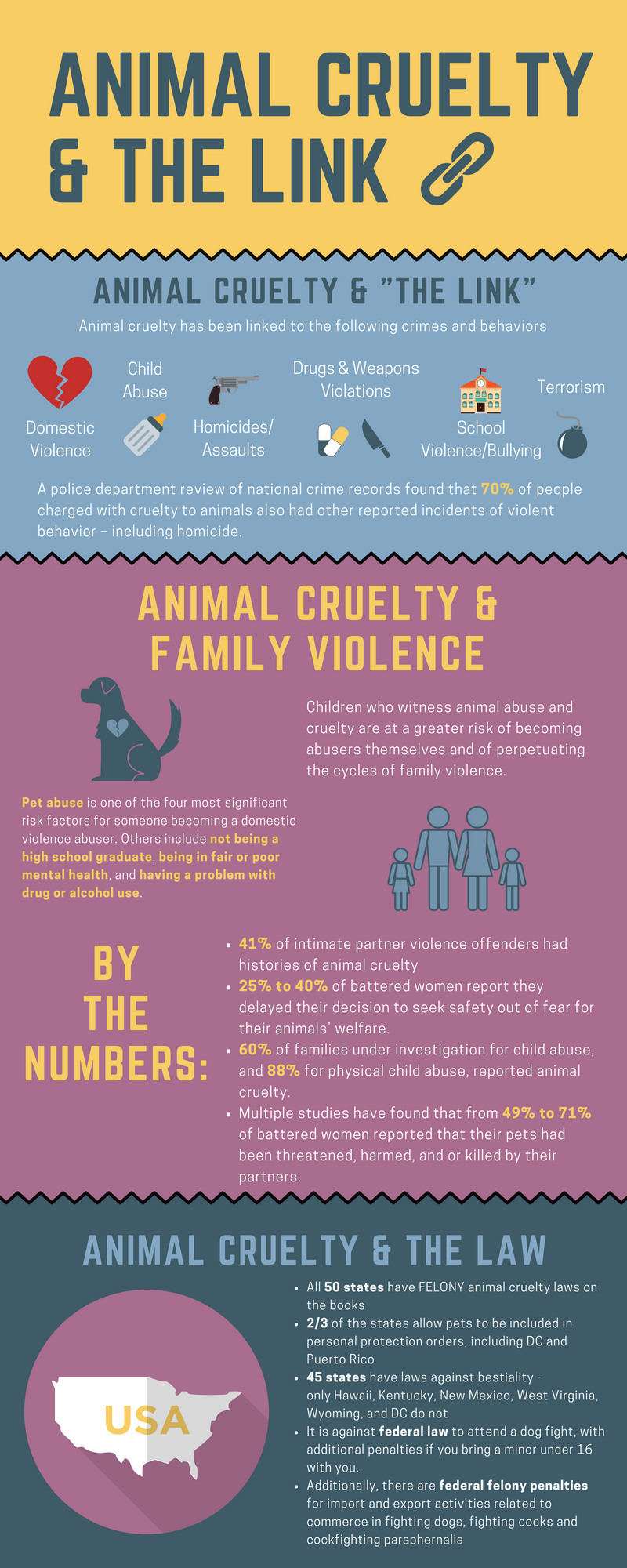Is there a correlation between animal cruelty and violent behavior? This question invites a deeper exploration into the psychology of individuals who commit acts of violence against both animals and humans. As we peel back the layers of this complex issue, we uncover not only the troubling statistics but also the profound implications for law enforcement and society as a whole.
At a glance, the relationship between animal cruelty and violent behavior in humans may appear tenuous. Yet, a myriad of studies suggests a potentially alarming connection. Research indicates that individuals who engage in the mistreatment of animals often exhibit antisocial behaviors and may have a propensity for violence against humans. This correlation can be traced back to the early development of these individuals, wherein cruelty towards animals often signifies deeper psychological disturbances or socio-environmental factors.
One of the most compelling arguments for this connection is the concept of the “link.” The term refers to a recognized pattern where acts of animal cruelty precede or occur alongside violent behaviors directed at humans. Psychological research supports this notion, showing that children exhibiting cruelty towards animals are more likely to engage in aggressive behaviors toward peers. These early indicators raise a resounding question: can we intervene effectively to prevent future acts of violence if we can identify these tendencies in youth?
As we delve deeper into the psychological underpinnings of violence, it’s crucial to consider the role of empathy. Empathy, or the ability to understand and share the feelings of others, plays a pivotal role in our interactions with sentient beings. In situations where individuals lack empathy, the mistreatment of animals may emerge as a substitute for suppressed aggression, resulting in a dangerous cycle. Those who inflict pain on animals may do so as an attempt to exert control or dominance, reflecting their own inner turmoil or unresolved issues.
Law enforcement agencies are increasingly recognizing the importance of this correlation in their investigative practices. By analyzing patterns of animal cruelty, law enforcement can identify potential offenders who may later escalate to violent crimes against humans. This proactive approach not only serves to protect vulnerable animals but can also act as an early warning system for potential human victims. In this manner, society must foster a dual commitment: addressing animal welfare while simultaneously prioritizing human safety.
Furthermore, understanding this relationship carries significant implications for criminal justice systems. Individuals convicted of animal cruelty may be assessed for risk factors that extend beyond their treatment of animals. For instance, psychological evaluations may be warranted to ascertain underlying issues that could lead to further violence. This holistic approach can help to craft tailored intervention strategies aimed at rehabilitation rather than mere punishment.
Ponder, if you will, the societal repercussions of ignoring the signs of animal cruelty. When we view animal cruelty merely as an aberration rather than a precursor to greater societal issues, we risk enabling a cycle of violence. A focus on early prevention and education can equip communities with the knowledge to intervene effectively and reduce potential future harm to both animals and humans.
Moreover, community programs that emphasize compassion and respect for all living beings can play an invaluable role in mitigating these behaviors. Educational campaigns focused on empathy-building, particularly among children and adolescents, can serve as a powerful catalyst for change. Initiatives that incorporate humane education into school curricula foster an understanding of the intrinsic value of animal life, potentially altering the trajectory of at-risk youth.
Concurrently, there is growing evidence to suggest that individuals who engage in animal cruelty may suffer from mental health issues such as depression, traumatic experiences, or substance abuse. Understanding the root causes of their behaviors is vital for effective interventions. Mental health professionals can offer valuable insights by addressing the emotional and psychological needs of these individuals. By doing so, they can help cultivate a deeper understanding of empathy, ultimately curbing the propensity for violence.
Examining the legal perspective of animal cruelty also uncovers significant disparities across different jurisdictions. Some areas have enacted stringent laws aimed at deterring animal cruelty, recognizing its implications for public safety. However, in many regions, penalties remain minimal, reflecting a societal ambivalence towards animal welfare. Such inconsistency not only undermines the seriousness of the offense but also perpetuates a disregard for the welfare of animals and their potential as indicators of violent behavior.
Persistent education and advocacy are integral to shifting societal perceptions about animal cruelty. By fostering a culture that prioritizes the humane treatment of all creatures, communities can galvanize support for stronger legal protections while actively working towards prevention strategies. This cultural shift requires not only individuals to stand against animal cruelty but also institutions, businesses, and governments to recognize their role in safeguarding both animals and society.
In conclusion, the link between animal cruelty and violent behavior is a multifaceted issue that warrants extensive examination. By delving into the psychological, sociological, and legal frameworks surrounding this topic, society can uncover valuable lessons on empathy, prevention, and intervention strategies. The challenge remains: how can we collectively advocate for a world where both animals and humans can coexist peacefully? Only through continued dialogue, education, and action can we hope to foster a more compassionate society that values the lives of all sentient beings.








